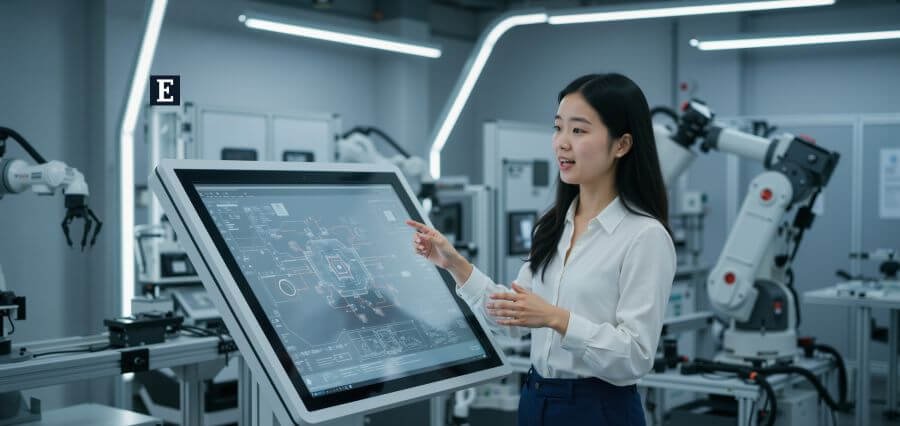STEM education has never been more important in today’s era of technological innovation and interconnectedness. They are not only tasked with leading the pace on innovation, but also with solving some of the most harmful problems facing the world—ranging from climate change, to medicine and infrastructure. Yet most conventional techniques of educating STEM are intended for rote memorization and for theoretical abstraction, which could be boring and keep the students from perceiving how this can be used outside their classrooms. To tap the entire power of children’s brains, STEM education must transition towards more interactive, concerted, and relevant to the demands of the 21st century. STEM in the future is so much, so much more than textbooks and testing. It relies on developing the core skills of the students such as critical thinking, problem-solving, creativity, and collaboration. With new technologies, experiential learning activities, and equity and inclusion, educators can turn the STEM classroom into a place where all the students can excel and become an effective member of society.
Integrating Technology for Experiential Learning
Perhaps the most dramatic feature of effective STEM innovation is the conscious leveraging of technology to facilitate learning. Virtual labs, simulation software, 3D printing, robots, and augmented reality are revolutionizing the classroom. These tools allow learners to see abstract ideas, virtually test, and produce prototypes of solutions to real issues without regard for resources available or concern for safety. This is hands-on, experiential learning deepening learning and promoting curiosity. Moreover, technology allows students to learn by doing, a learning-by-doing mode. This may involve creating a smartphone application, coding a robot, or constructing a simulation of an eco-city.
Such real-world activities enable students to engage fully with the subject matter, bridge theoretical abstractions to the real world, and own learning. Significantly, they portray the interdisciplinary, project-oriented nature of most STEM professions, offering students concrete, career-relevant experiences. Technology also facilitates individualized learning pathways. With AI-based tutor applications and adaptive learning software, education may be directed enough to suit individual students’ needs.
Creating Equity and Inclusion in STEM
Although the scale of STEM education benefits is titanic, they remain inaccessible to all. Students from underrepresented racial and ethnic groups, women, and economically disadvantaged classes are likely to face institutional barriers to quality STEM education opportunities. They could find underfunded schools, limited avenues to be heard in STEM professions, and cultural stereotypes leading them away from it. Education innovation must also place the same bet on equity and inclusion to unleash the potential of all students. Inclusive STEM begins with culturally responsive instruction—a pedagogy that identifies and engages students’ cultures, backgrounds, and learning styles. Teachers can build bridges to engagement by hanging up examples, case studies, and past role models from students’ own diversity in their classrooms.
When students see engineers and scientists who reflect their own identities and experiences, they are better able to envision themselves pursuing similar careers in the future. Availability of quality resources is equally important. These resources involve the provision of cutting-edge lab equipment, high-speed internet access, updated curriculum, and extracurriculars such as coding, science fairs, and makerspaces. Partnerships with organizations, non-profit, and tech industries can aid underserved schools in mitigating resource deficiencies. Outreach and mentorship programs also have a significant role to play in breaking down barriers to entry for underrepresented student populations in STEM.
Encouraging Interdisciplinary and Real-World Applications
Innovative STEM education also encompasses its emphasis on interdisciplinary studies and real-world applications. Climate change, pandemics, and responsible use of AI cannot be neatly compartmentalized within a single discipline. Preparing for such multi-disciplinary challenges demands an integrative, problem-solving approach that transcends boundaries. Project-based learning (PBL) is a useful vehicle for forging those linkages. In PBL, students work together in investigating and solving real questions or problems. For instance, an urban sustainability project would bring together ideas in environmental science, civil engineering, data science, and public policy.
This manner compels students to think innovatively, study thoroughly, and imaginatively work with challenging issues. It also mimics the collaborative culture that there is in most of the STEM professions, equipping students with technical and social skills. Working with external companies and schools—i.e., universities, employer organizations, and research institutes—is a further development of learning. Guest speakers, mentoring, and placements introduce technology and the workplace to the classroom. These placements open up the path to STEM careers more clearly and provide aspiring role models and hands-on ‘in-the-workplace’ training.
Conclusion
It isn’t simple to get all students to their full potential with new STEM education—it requires work on the part of teachers, schools, policymakers, and communities. By embracing emerging technologies, designing experiential and project-based learning, embracing equity and inclusion, and connecting learning to real-world problems, we can build an education system that can enable all learners to succeed in an increasingly interconnected, rapidly changing world. The future belongs to a generation of learners who will innovate with boldness, collaborate, and think critically. With future-proof STEM education, we build future minds not only to suit the future, but to build it.
Read More: Top Leadership Trends 2025 Shaping the Future of Work

